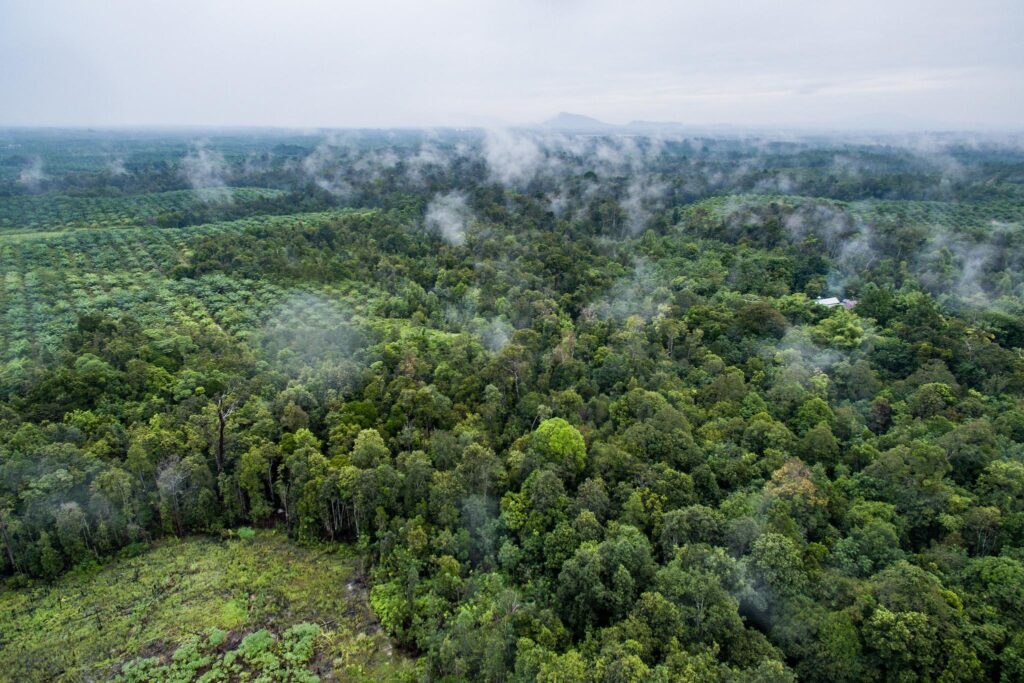A new study published in Besjournals reveals that forest cover significantly boosts natural pest control by birds and bats in vineyards, regardless of how intensively the vineyards are managed. This breakthrough research highlights the vital role surrounding forests play in supporting biodiversity and maintaining healthy crop yields without relying solely on chemical interventions. As vineyards worldwide grapple with sustainable farming practices, the findings suggest that preserving nearby forest habitats could be a powerful strategy to naturally keep pest populations in check.
Forest Cover Boosts Natural Pest Control in Vineyards
Extensive research reveals that vineyards bordered by forested areas benefit significantly from enhanced pest control, driven primarily by the activities of birds and bats. These natural predators thrive in forest habitats, where they find shelter and abundant food sources, enabling them to forage effectively within neighboring vineyards. Notably, this biological pest regulation occurs regardless of how intensively the vineyard is managed, highlighting the independent role of forest cover in maintaining ecosystem balance.
Key findings from the study include:
- Forested edges support higher populations of insectivorous birds and bats.
- Natural pest suppression reduces the need for chemical interventions across vineyard types.
- Enhanced biodiversity contributes to resilient vineyard ecosystems, mitigating pest outbreaks.
| Vineyard Management | Pest Control Efficiency | Bird & Bat Activity |
|---|---|---|
| Low Intensity | High | Abundant |
| Medium Intensity | Moderate | Consistent |
| High Intensity | Moderate | Substantial |
Birds and Bats Play Key Roles Regardless of Management Practices
Both birds and bats emerge as vital natural pest controllers across vineyards, regardless of whether the surrounding landscape is subject to intensive or organic management. Their foraging activities significantly reduce populations of harmful insects, proving that biodiversity can foster ecosystem services without strict adherence to specific vineyard practices. Interestingly, the abundance and efficiency of these aerial predators are strongly linked to the extent of nearby forest cover, which provides essential habitat and resources such as nesting and roosting sites.
Key findings from recent research highlight:
- Forest proximity boosts the presence of insectivorous birds and bats, enabling continuous pest suppression.
- Consistency in pest control effectiveness across different vineyard management styles underscores the universal value of natural habitats.
- Complementary activity patterns between diurnal birds and nocturnal bats create a 24-hour pest management cycle.
| Pollutant Control Agent | Active Time | Forest Cover Influence |
|---|---|---|
| Birds | Daytime | High |
| Bats | Nighttime | High |
This evidence points to a universal approach in vineyard sustainability-leveraging the intrinsic benefits of forested landscapes to naturally regulate pests. Such integration could reduce reliance on chemical interventions and promote a more resilient agroecosystem.
Experts Recommend Integrating Woodland Areas to Enhance Vineyard Sustainability
Recent studies underscore the vital role that woodland areas play in bolstering natural pest control mechanisms within vineyards. By maintaining patches of forest cover adjacent to grape-growing sites, vineyards benefit from the enhanced activity of birds and bats, two key predators of common vineyard pests. This symbiotic relationship operates effectively regardless of the vineyard’s management intensity, meaning that whether vineyards employ organic, conventional, or integrated practices, the presence of nearby woodlands consistently contributes to healthier, more balanced ecosystems.
Experts highlight several key advantages to integrating forested habitats within or near vineyard landscapes:
- Increased biodiversity: Diverse bird and bat populations help regulate pest populations naturally.
- Reduced reliance on chemical pesticides: Enhanced biological control lowers the need for synthetic interventions.
- Resilience to climate fluctuations: Forests provide microhabitats that support wildlife during extreme weather.
- Improved vineyard sustainability: Promoting ecosystem services strengthens long-term production viability.
| Pest Predator | Forest Habitat Dependency | Effect on Pest Populations |
|---|---|---|
| Insectivorous Birds | High | Significant Reduction |
| Bats | Moderate | Moderate Reduction |
| Generalist Predators | Low | Minimal Impact |
In Retrospect
As vineyards continue to seek sustainable strategies to protect their crops, this new research underscores the vital role that maintaining forest cover plays in bolstering natural pest control. By supporting both bird and bat populations, forested areas contribute to healthier vineyards regardless of how intensively the land is managed. These findings not only highlight a promising path for eco-friendly agriculture but also reinforce the broader importance of preserving natural habitats in agricultural landscapes.
